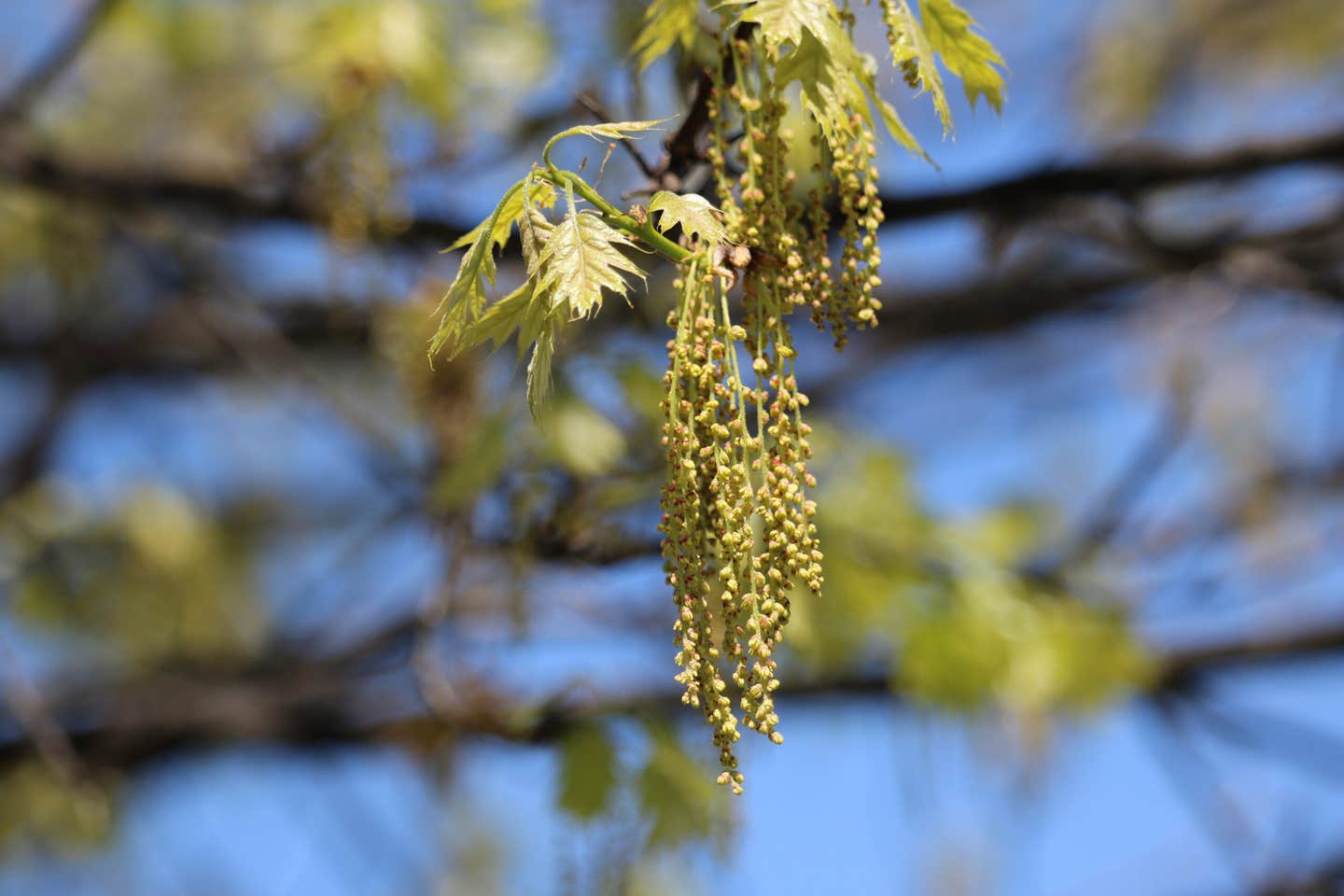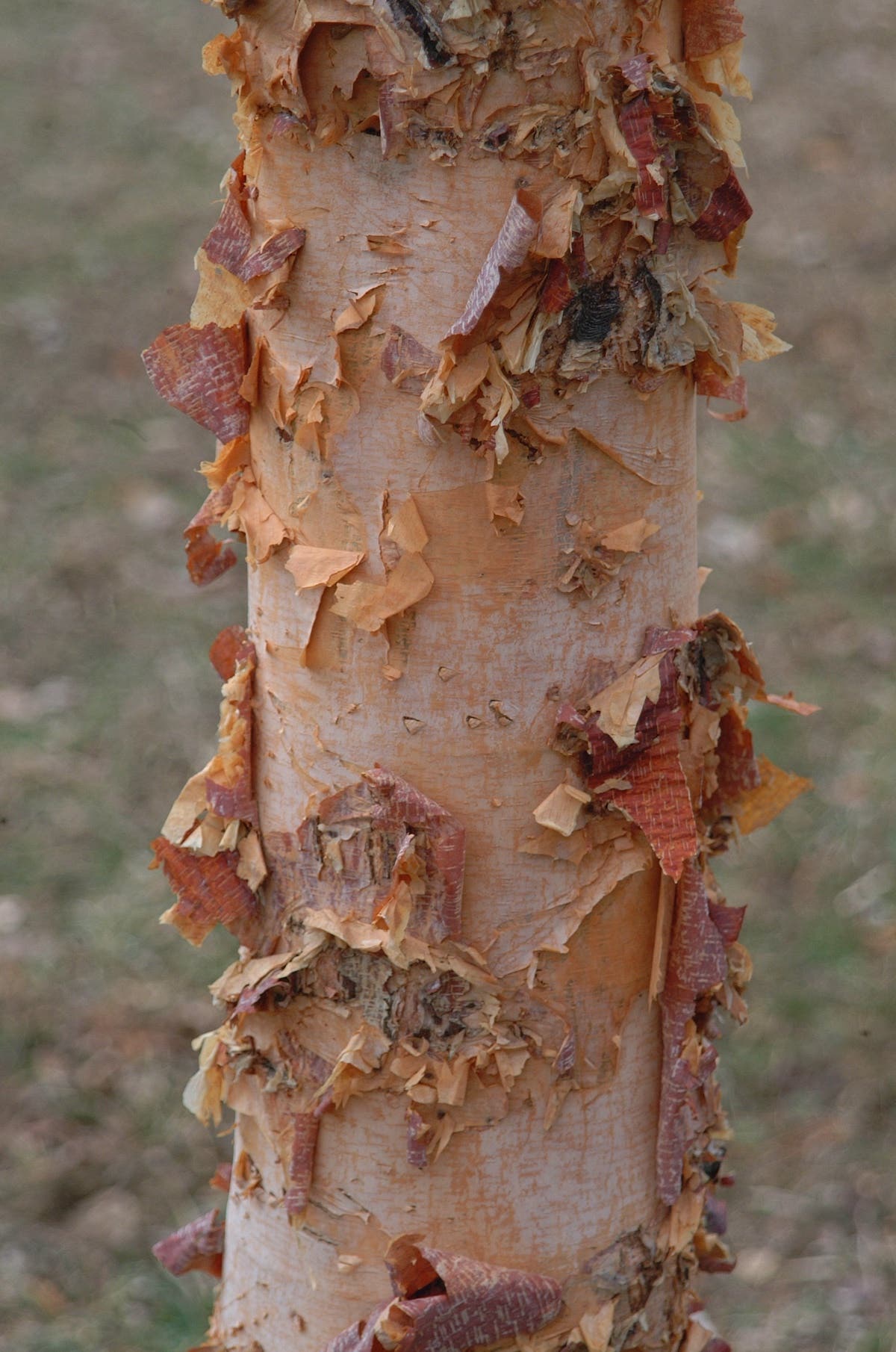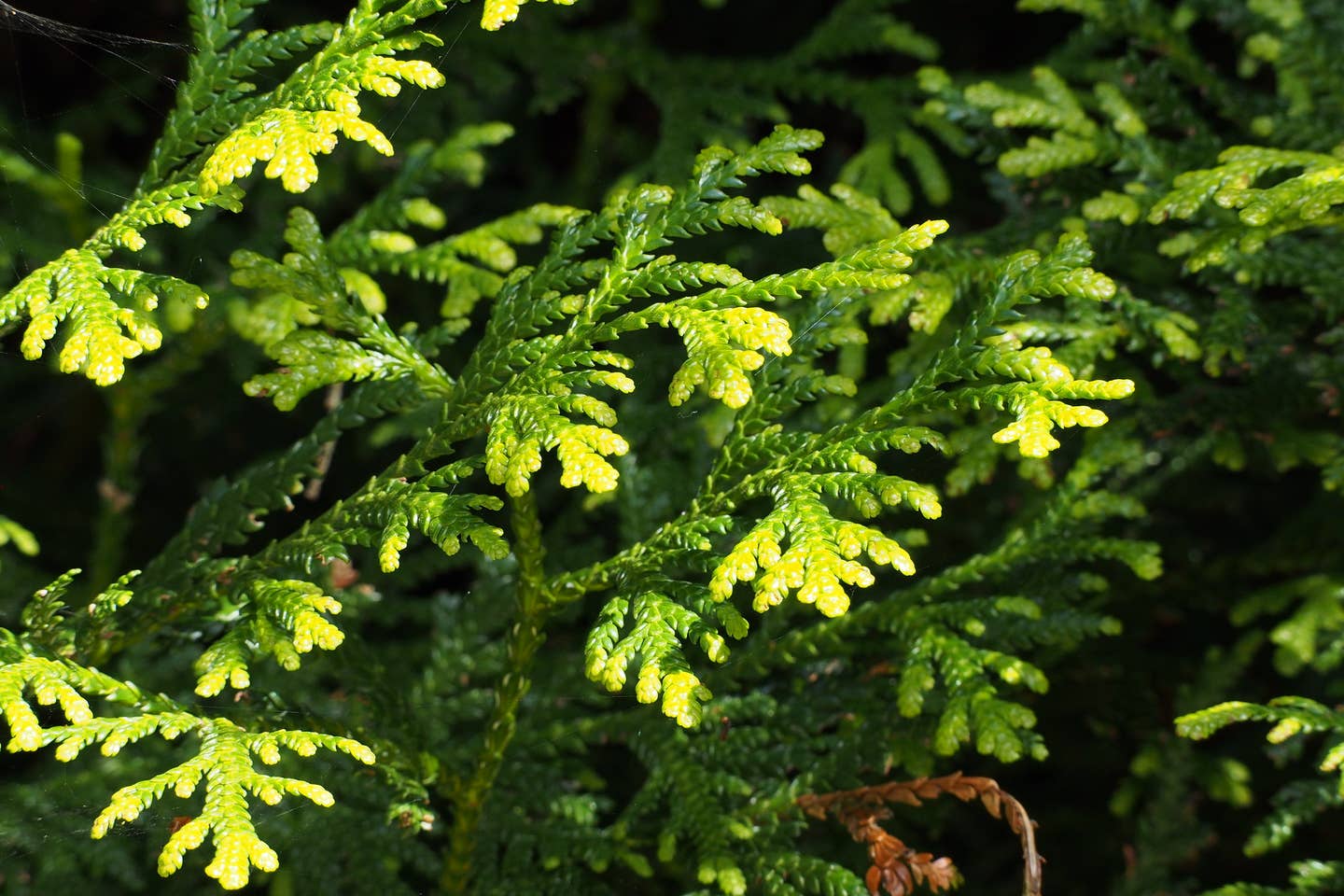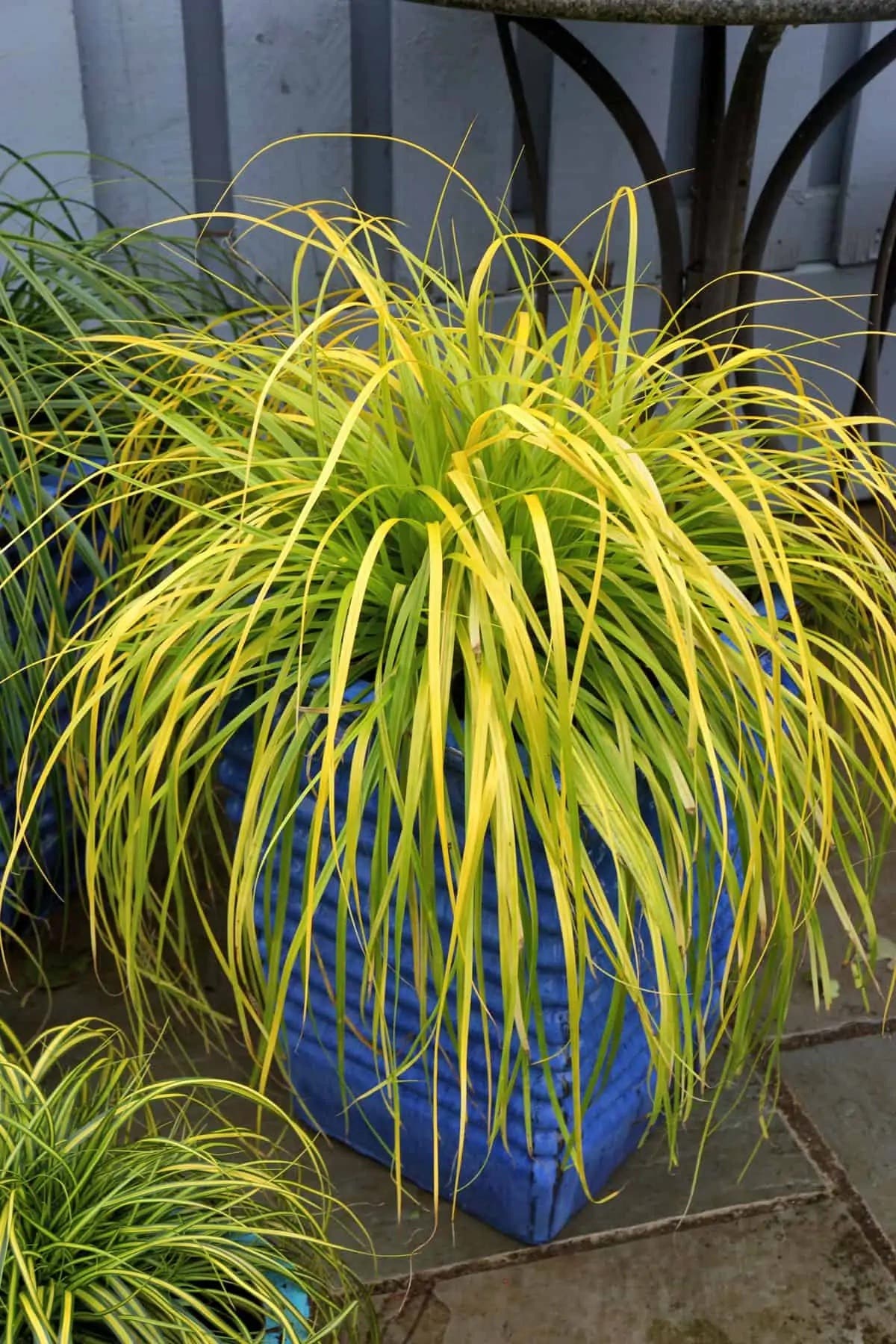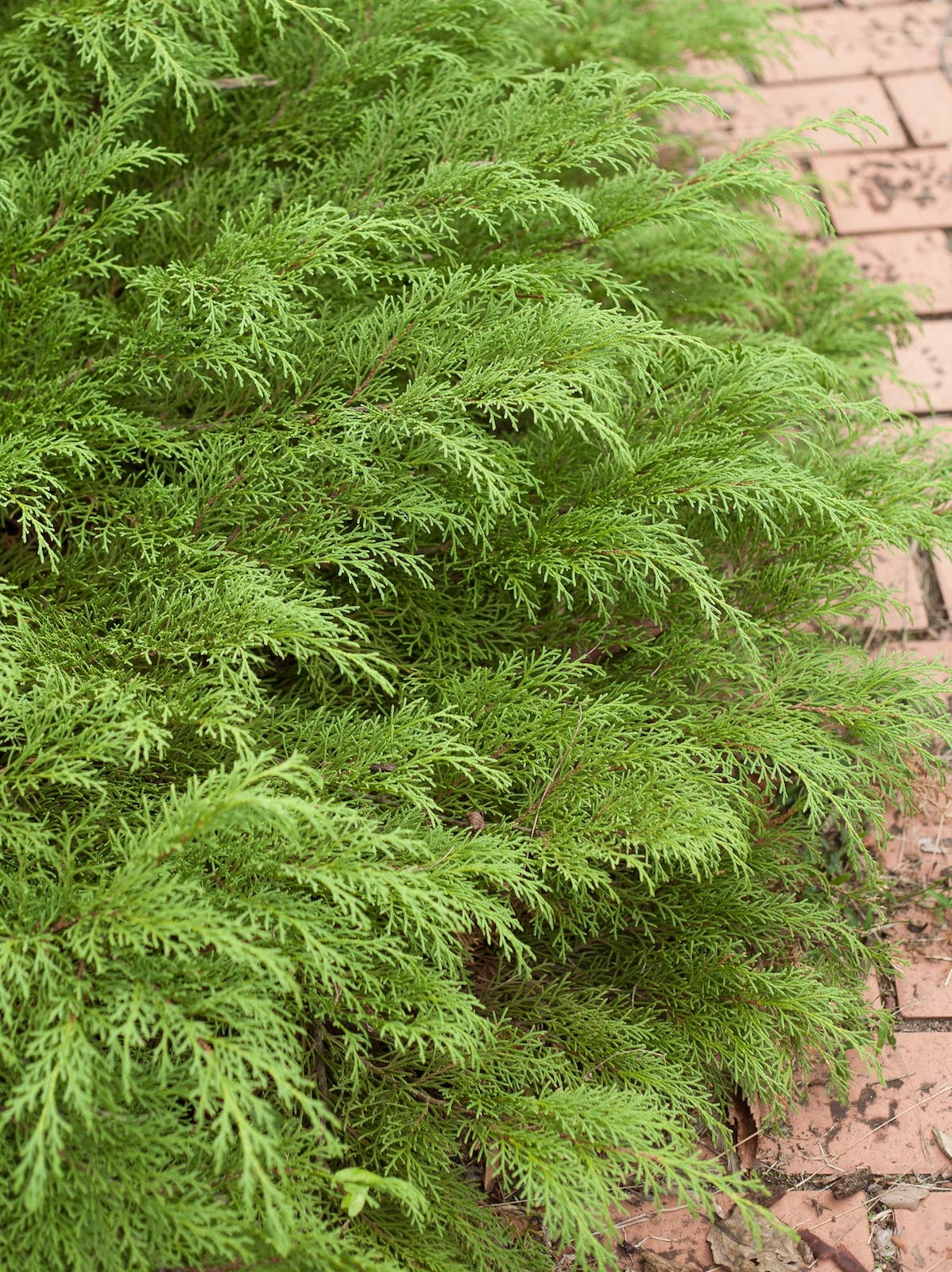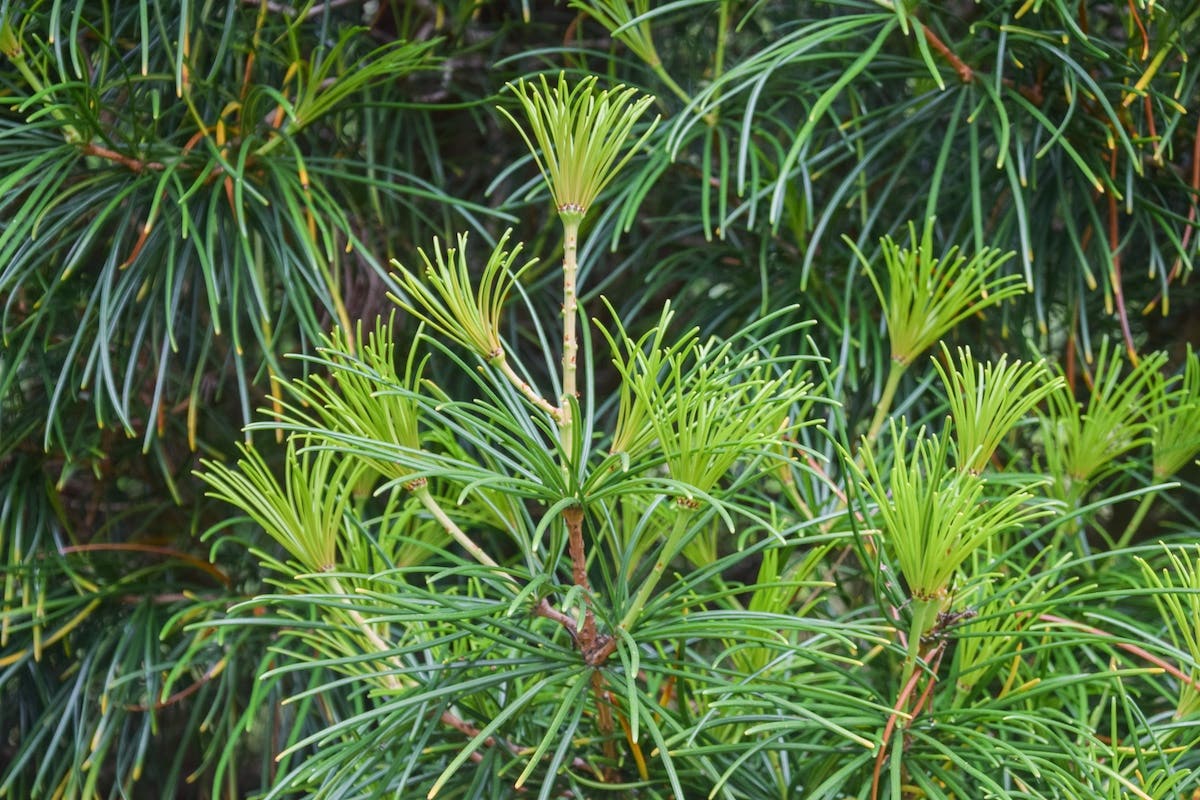Since time immemorial, people have dreamed of and collected beautiful fragrances in the garden. Fragrant flowers like gardenias, roses and lilacs need no introduction, but there are many other scented plants not as well-known for gardens. Here are four to combine for a succession of fragrance from spring to fall.
Spring: fothergilla
A genus in the witch hazel family, Fothergilla contains a handful of species native to the southeast United States. These deciduous shrubs lend fragrance to borders in spring, and unlike many spring-blooming shrubs they provide continued interest all the way until frost.
Both large fothergilla (F. major) and dwarf fothergilla (F. gardenii) resemble shrubby, multi-stemmed witch hazels, with scalloped leaves that drop in fall to reveal an interesting architecture of twiggy branches. Fothergilla major reaches six to ten feet tall and wide and prefers part shade and drier soils, while the dwarf species grows one to three feet tall and wide and enjoys more sun and moisture. Both can colonize an area at a slow to moderate rate; the smaller species is more apt to spread this way, especially if given loose soil.
For several weeks beginning in mid-spring, one- to two-inch-long, creamy white bottlebrush flowers blossom on the branch tips and fill the air with a light honey scent. The shrub’s leathery leaves remain fresh and appealing all summer; come autumn, they turn a riot of red, orange, yellow and purple.
The hybrid F. x intermedia ‘Mount Airy’, which arose from a naturally occurring cross between the two species, offers the beauty of its parents at an intermediate size of three to five feet tall and wide. Its sport 'Blue Shadow’ looks identical save for its leaves, a striking powder blue in spring and summer. The trade-off is its less-than-stellar fall foliage.
Late spring to summer: crinum lily
The crinum lily (Crinum; Zones 7–11), a pass-along plant from yesteryear for milder climates, is a nearly indestructible gem. These tough beauties are often found blooming on long-gone homesteads, withstanding neglect and many soil types, from dry and sandy to fairly moist. The daylily-like foliage forms large clumps two to eight feet wide that put up two- to five-foot-tall scapes bearing drooping teardrop flower buds. The buds slowly inflate and open in late afternoon, filling the air with a heady fragrance.
Thanks to trials—and perhaps our warming climate—Zone 6 gardeners can now confidently grow new hybrids and even some older cultivars without much fuss. Hardier crinums include the peppermint-striped 'Milk and Wine', pink 'Sunbonnet', oversized 'Super Ellen', heirloom 'Ellen Bosanquet' and the species C. bulbispermum, known as the Orange River lily.
Late summer to fall: summersweet
Clethra alnifolia (Zones 3–9), also known as summersweet or sweet pepperbush, is another deciduous shrub from eastern North America that uniquely extends shrub season, but in this case with its later flowers. Plus, it tolerates shade and has some resistance to deer.
In the wild, summersweet is a colonizing shrub of variable height and width, ranging from three to eight feet tall and wide in sunny or partly shaded sandy stream banks and moist woodlands. In summer and even into autumn, white to pink, two- to six-inch nectar-rich flower spikes bloom at the tips of the branches, filling the immediate area with a heady, sweet and spicy vanilla-like scent. Come fall, the leaves usually turn a pleasant light yellow.
Widely available cultivars such as 'Hummingbird' and 'Sixteen Candles' bring the shrub's size to three to five feet tall and wide with a denser habit; Sugartina ('Crystalina') takes it down further, to one to three feet. 'Ruby Spice' sports blush pink flowers on a three- to five-foot-shrub, while 'September Beauty' maintains a larger habit but blooms very late, potentially well into September. The plant is slow to leaf out in spring, but don't fret; it's not dead or frost damaged but still sleeping.
Summer: flowering tobacco
Perfect for tucking alongside crinum or toward the back of the border, South American flowering tobaccos (Nicotiana sylvestris and N. alata) are indispensable for their long summertime bloom. Tender perennials (Zone 10) usually grown as annuals, they were Victorian favorites for their garden perfume and should be grown today for both their easy care and sweet scent.
Nicotiana sylvestris is a big, bold plant, with two-foot-wide rosettes of large, sticky, plantain-like foliage that can shoot up three to six feet tall. From early summer to frost, spidery racemes of drooping white flowers emerge in clusters like fireworks, emitting a jasmine-like fragrance that grows stronger in the evening, attracting sphinx moths. 'Only the Lonely' is an available selection.
Nicotiana alata, meanwhile, is often found as dwarf hybrids—18- to 24-inch plants of fuzzy foliage with upright, tubular star-shaped flowers that range from white to chartreuse, pink and deep red, though they all sacrifice fragrance! The straight species is a larger, airy plant growing three to five feet tall and wide, with fresh white to soft green, nicely scented flowers that open near sundown. 'Fragrant Cloud' is one compact hybrid (to three feet) that retains fragrance.
Image credits: Fothergilla major by Michelle Gervais; Crinum bulbispermum by Krzysztof Ziarnek, Kenraiz/CC BY-SA 4.0; Clethra alnifolia ‘Ruby Spice’ by Michelle Gervais; Nicotiana alata by Carl Lewis/CC BY 2.0


